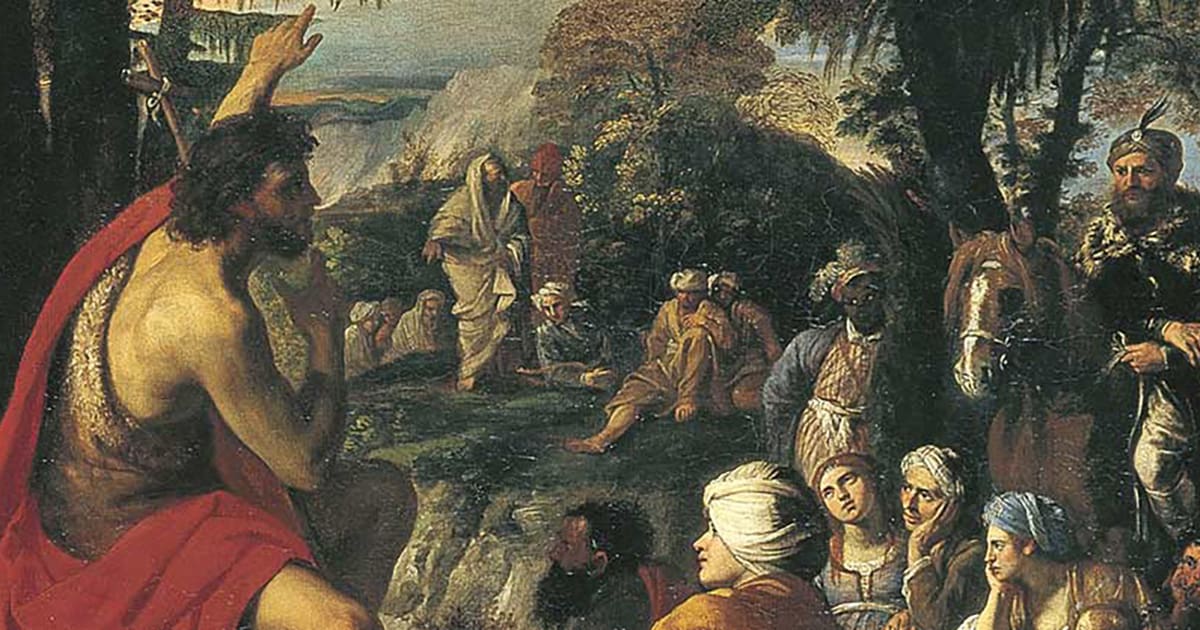An Advent Journey with St. Elizabeth Ann Seton | A Five-Part Series
Right now, the streets of America are ablaze with lights. Wreaths and garlands hang on the doors of shops and homes, and holiday songs play on every radio. For the culture, the Christmas season is in full swing.
While the world celebrates, however, the Church waits. And she calls us to wait, too.
In this Sunday’s Gospel, the people approach John the Baptist, asking whether he is the Messiah. But the faithful must continue waiting for the One to come after John. “I am baptizing you with water,” he answers, “but one mightier than I is coming. I am not worthy to loosen the thongs of his sandals. He will baptize you with the Holy Spirit and fire.” (Luke 3:10-18).
Being patient, however, isn’t easy. Waiting isn’t easy. It doesn’t come naturally to most of us. Like Adam and Eve in the Garden, we want what we want now. We reach for things before it’s time. And as we reach, we stumble and fall.
So, God gives us seasons of waiting—opportunities to practice patience and learn to wait well. He does this for the whole Church during Advent. And He does this for each of us throughout our lives.
Saint Elizabeth Ann Seton endured many seasons of waiting—waiting for marriage and childbirth, waiting to enter the Church, waiting for permission to form her community. No season of waiting, however, taught her as much as the month she spent waiting with her dying husband in a cold and drafty Italian prison.
The prison, or lazaretto, wasn’t for criminals. It was for the sick. The Italian government quarantined Elizabeth, William, and their eldest daughter Anna Maria, there, after they arrived in Italy in November 1803. The family had sailed hoping the trip to Italy might restore William’s health and business. It did the opposite.
For 25 days in the bleak lazaretto, Elizabeth sat by William’s side and waited for their liberty. There was no escape, no convincing anyone to change their mind. There was nothing to be done but wait.
But, as she waited, caring and praying for her husband and daughter, she did what the Lord calls each of us to do.
First, she turned to Him and leaned on Him. “How gracious is the Lord, who strengthens my poor soul,” she wrote in her journal at the time.
She also gave thanks for the gifts God was giving her in those difficult moments, writing, “When I thank God for my ‘Creation and preservation,’ it is with a warmth of feeling I never could know until now.”
Along with her husband, she focused on the moment that was, not the future to come. Her journal recalls, “He very often says this is the period of his life which if he lives or dies, he will always consider as blessed—the whole time which he has not lost.”
Above all, during those days, she encountered Jesus and His angels, talking to them, listening to them, and looking for them. “Sometimes I feel so assured that the Guardian Angel is present that I look from my book and can hardly be persuaded I was not touched,” she wrote.
In the days of Advent that still remain, may we have the same attentiveness to God in this present moment, learning to wait well as Christmas draws near.
Questions for Discussion
- How often do I struggle with patience? When do I struggle?
- How has my inability to wait caused problems in my life?
- What is one way I can practice waiting this Advent?
INTRODUCTION | An Advent Journey with St. Elizabeth Ann Seton
WEEK ONE | Hope in the Darkness
WEEK TWO | To Trust God and Repent
WEEK THREE | Waiting for the Lord
WEEK FOUR | God Is With Us
 Emily Stimpson Chapman is an award-winning Catholic writer based in Pittsburgh, Pennsylvania. Her books include The Catholic Table: Finding Joy Where Food & Faith Meet (Emmaus Road, 2016); The American Catholic Almanac: The Patriots, Saints, Rogues, and Ordinary People Who Changed America (Image, 2014), These Beautiful Bones: An Everyday Theology of the Body (Emmaus Road, 2013), and The Catholic Girl’s Survival Guide for the Single Years (Emmaus Road, 2012). Emily writes regularly on ‘all things Catholic’—from politics and catechesis to higher education and the media, with a special focus on the Church’s teachings on marriage, sexuality, and femininity. You can find her latest content on Instagram (@emilystimpsonchapman) and links to her blogs, newsletters and other content on her linktree page.
Emily Stimpson Chapman is an award-winning Catholic writer based in Pittsburgh, Pennsylvania. Her books include The Catholic Table: Finding Joy Where Food & Faith Meet (Emmaus Road, 2016); The American Catholic Almanac: The Patriots, Saints, Rogues, and Ordinary People Who Changed America (Image, 2014), These Beautiful Bones: An Everyday Theology of the Body (Emmaus Road, 2013), and The Catholic Girl’s Survival Guide for the Single Years (Emmaus Road, 2012). Emily writes regularly on ‘all things Catholic’—from politics and catechesis to higher education and the media, with a special focus on the Church’s teachings on marriage, sexuality, and femininity. You can find her latest content on Instagram (@emilystimpsonchapman) and links to her blogs, newsletters and other content on her linktree page.
Source: https://setonshrine.org/








0 Comments